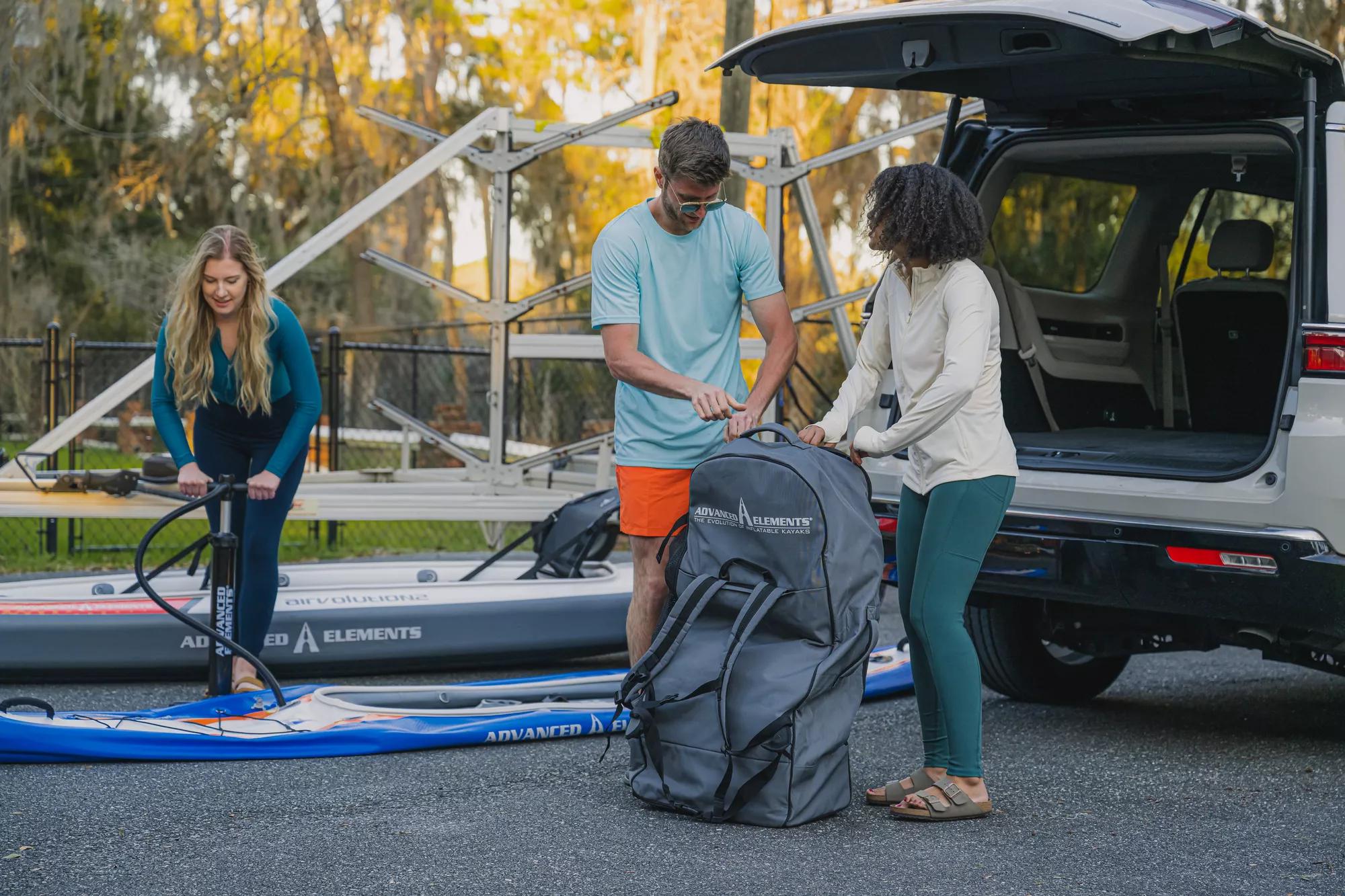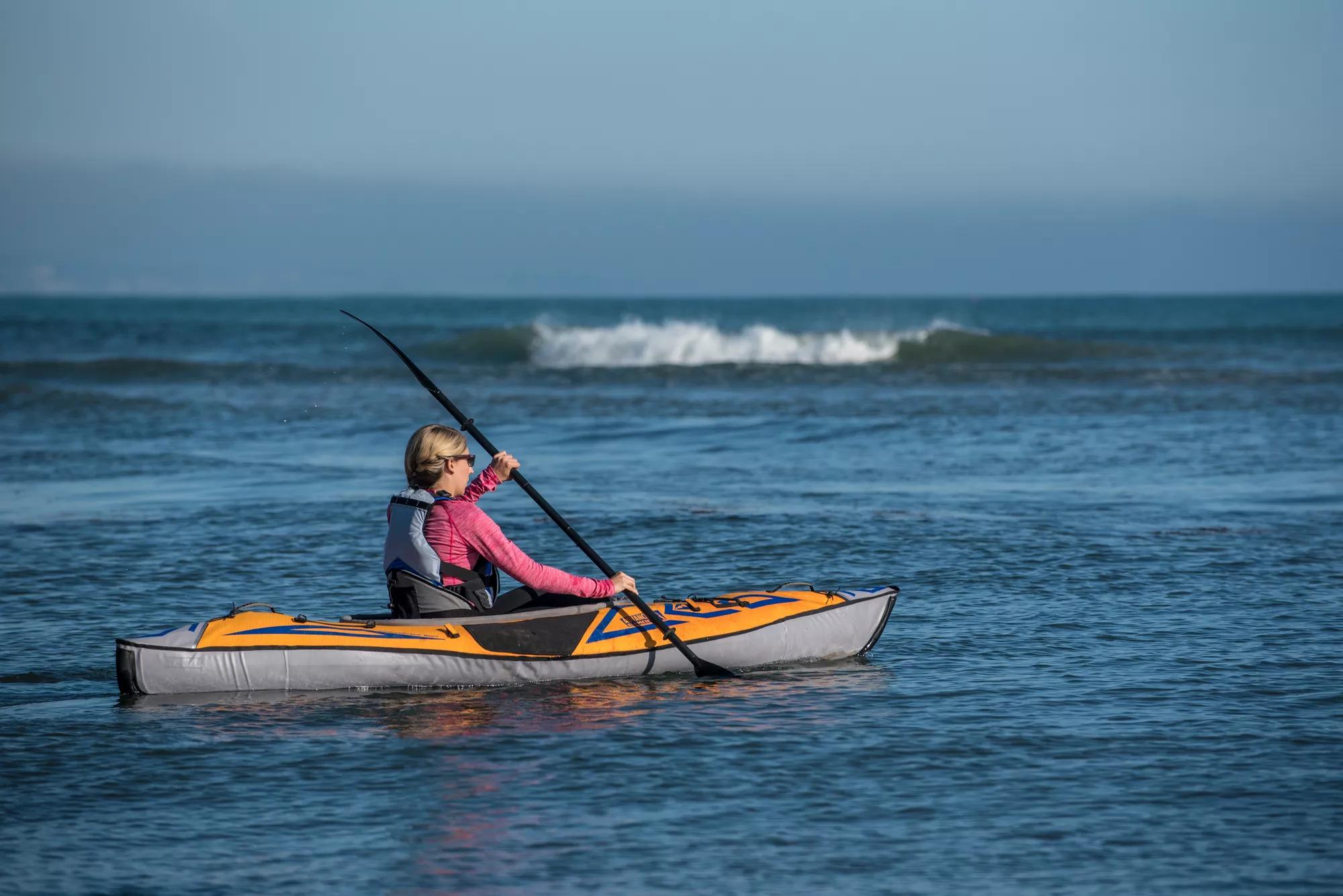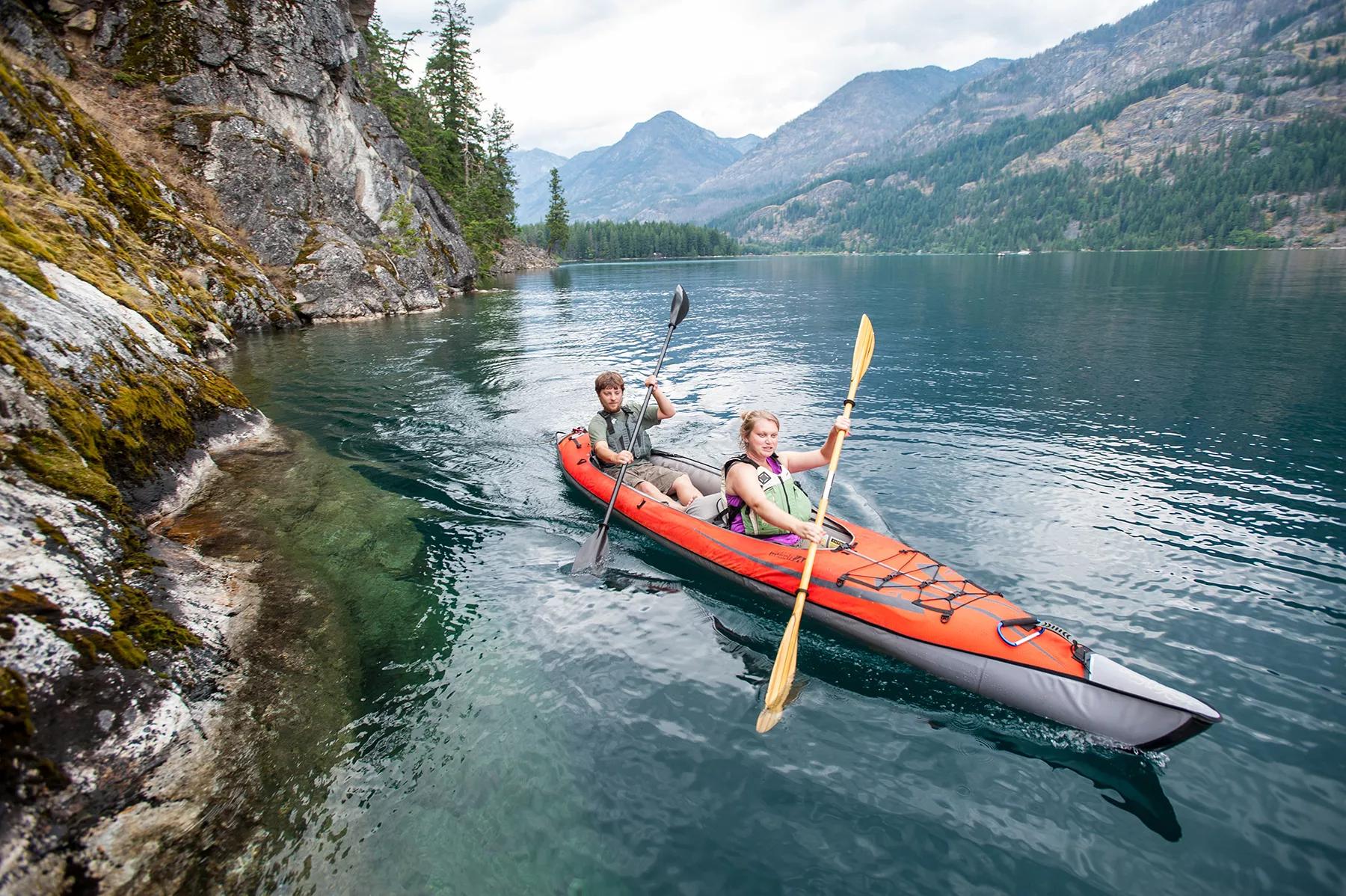While all kayaks come with a pump, other included accessories vary across models, encompassing essential items for setup, maintenance and convenience.

Accessories Included
While all kayaks come with a pump, other included accessories vary across models, encompassing essential items for setup, maintenance and convenience.

High Performance
Whether it’s drop stitch, aluminum rib frame technology, or multiple layers; Advanced Elements Kayaks consistently integrate cutting-edge innovations, ensuring unparalleled performance and safety on the water.

Easy Transportation
No roof rack needed! Pack it in the trunk of your car or fly it to remote destinations so you can enjoy greater adventures than hardshells can allow.